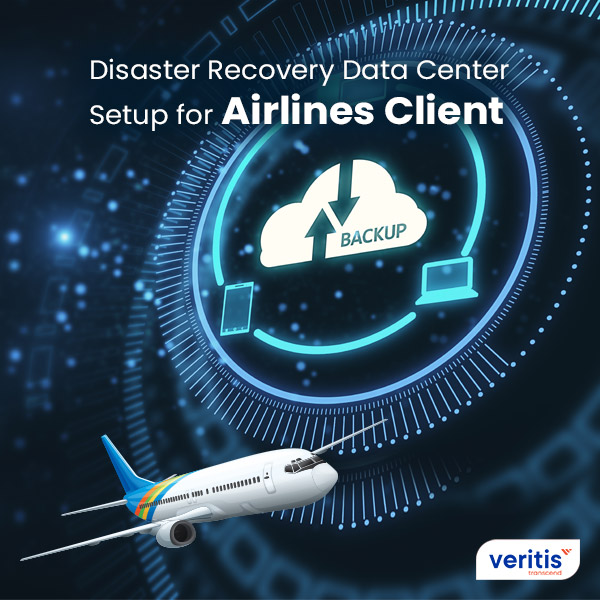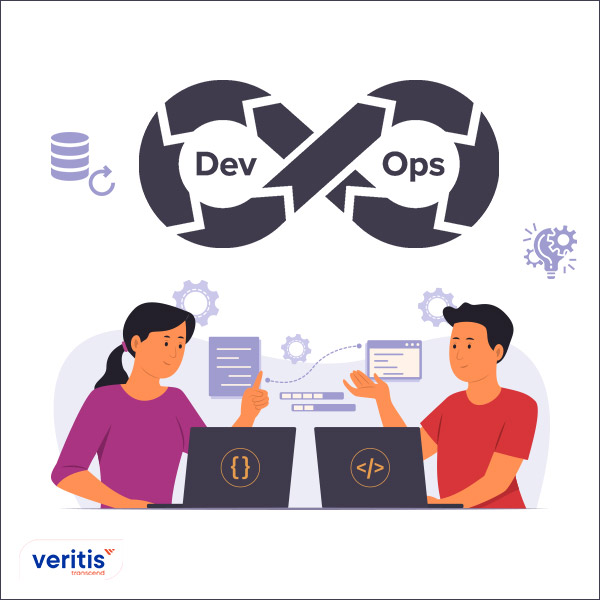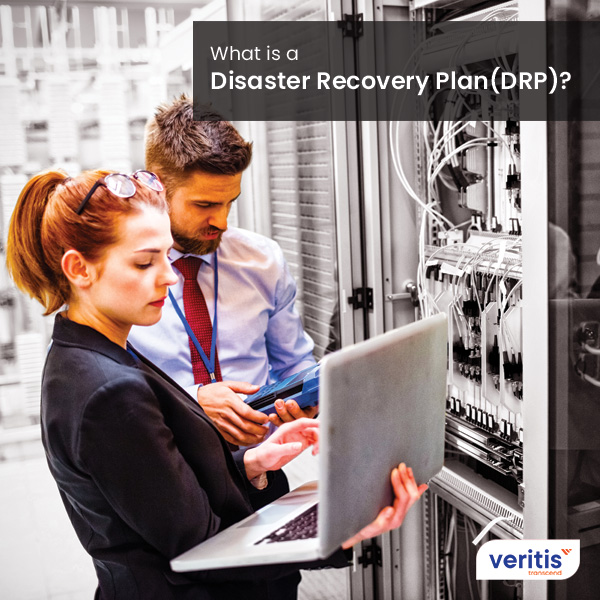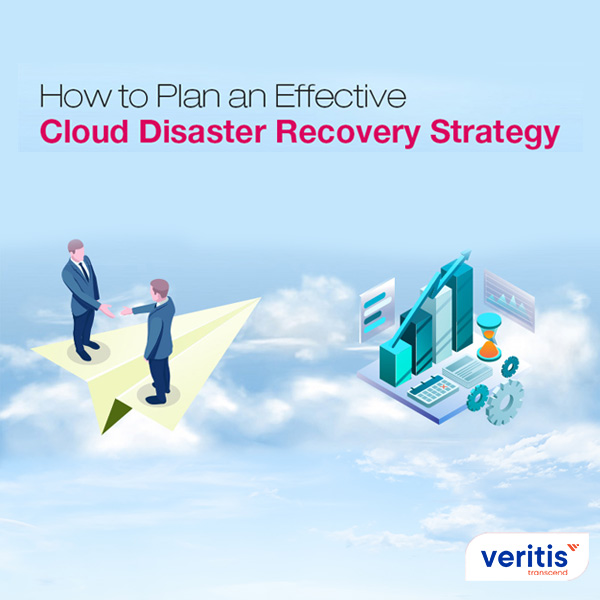Disaster Recovery in Cloud
Ensuring Business Continuity and Seamless Disaster RecoveryBusiness Continuity and Disaster Recovery
Organizations must be well-prepared for various types of disasters, including hardware failures, cyberattacks, and natural disasters. The ability to replicate systems and data plays a significant role in ensuring business continuity during a disaster.
Data loss can have severe financial consequences and damage an organization’s reputation by eroding customer confidence. Therefore, it is essential to engage in proper planning and create a roadmap for effectively dealing with potential disasters, minimizing the negative impact in the long run.
Disaster Recovery (DR) enables uninterrupted business operations during a disaster. Many large enterprises allocate 2-4% of their IT budgets to disaster recovery planning; some even spend up to 25% to mitigate infrastructure risks.
Disaster Recovery Services and Business Impact
$140.5 B
Expected growth of the global DRaaS market through 2030
75%
Small businesses currently lacking a specific DR plan
96%
Businesses fully recovered operations with a perfect DR solution
$17,244
Estimated high-end cost per minute of unplanned downtime
50%
Companies experienced day-long downtime in the past 5 years
93%
Companies without a DR plan are likely to wind up business within a year
$100,000
Downtime recovery business loss caused by a ransomware incident
45%
Total unplanned downtime caused by hardware failures
90%
The expected range of business failure after a disaster without a DR plan
Disaster Recovery Plan for Cloud Services – Key Considerations
A disaster recovery plan considers preparation for a disaster and the response to it, in addition to the steps required to ensure the system/operation restore. According to the Research Dive survey, the global market for disaster recovery-as-a-service is expected to generate a revenue of USD 60.4 billion, with a compound annual growth rate (CAGR) of 23.9% from 2022 to 2031.
Programs and Data
DR plans must account for both data and programs. Data includes customer accounts and business relationship records, while programs encompass the software that drives an organization’s operations.
Dependencies
Identify dependencies between software, as specific programs may require additional software to be loaded before they become operable.
Personnel
Identifying the key personnel involved in restoring systems and data during a disaster is crucial.
Compliance
Some sectors, such as healthcare, may require organizations to ensure regulatory compliance and security before resuming operations with recovered data.
Types of Cloud Disaster Recovery
Backup as a Service (BaaS)
Using BaaS, Cloud Service Providers (CSPs) backup and restore the contracted data. RaaS is an extension of BaaS, where applications are also restored from the cloud in addition to the data.
Recovery as a Service (RaaS)
RaaS (Recovery as a Service) is a cloud service that securely backs up and swiftly restores contracted data, minimizing downtime. It also restores applications from the cloud, going beyond data recovery, and ensuring business continuity.
Disaster Recovery as a service (DRaaS)
DRaaS is much more extensive than RaaS and includes cloud-based failover, in addition to backup and recovery services. DRaaS adoption is essential for organizations requiring 100% availability of their critical applications.
Advantages of DRaaS
Disaster Recovery as a Service (DRaaS) offers several advantages over traditional backup and disaster recovery methods, including
- Reliability, flexibility, and high performance
- Effective addressing of mobility and portability challenges
- Lower consumption of operational resources
- Rapid and immediate data recovery in the event of a disaster
- Quick restoration of normal operations
- Significant savings in terms of software licenses and hardware costs
Cloud-Based Disaster Recovery Platforms

AWS Disaster Recovery
AWS enables organizations to implement rapid recovery strategies for IT infrastructure and data.

Azure Disaster Recovery
Azure DR solution offers data backup, protects significant IT systems, minimizes downtime, and reduces recovery costs.

GCP Disaster Recovery
GCP provides cost-effective and efficient disaster recovery for physical, virtual, and cloud-based systems and applications.
Disaster Recovery Options
The basic version where an organization purchases a public/private cloud for data storage and manages data protection and recovery. It is suited for large organizations with a dedicated team of DR engineers.
Organizations manage the DR plan but can seek assistance from the DRaaS provider. Ideal for leveraging cloud flexibility, but recovery time is not ensured in the SLA.
The provider is responsible for data protection and recovery, including comprehensive SLAs with reimbursement options for unmet objectives. Priced higher than assisted and self-service DRaaS models.
Benefits of Implementing Cloud-based Disaster Recovery
There are several benefits of hosting a DR program in the cloud. Key benefits include
Eliminating Back-up Using Disks and Tapes
Cloud disaster recovery involves real-time data back-up in the cloud and eliminates the need for daily backup with disks, tapes, flash drives, and other options.
Off-site Storage of Mission-Critical Data
Widely dispersed cloud servers, redundantly designed in remote geographical locations, ensure that data is recovered, and production is restarted on time if the production center is partially or fully destroyed.
Reliable and More Accessible Implementation
Data restore functions can give rise to problems in case of physical backup using tape drives, disks, etc., unlike cloud restoration, which has a reliability of at least 99%
Cost Reduction
A cloud DR solution is cost-effective as organizations do not require to duplicate costly hardware and need to pay only for the services availed by the cloud service provider.
Scalability
Utilization of the Cloud DR services can be scaled up or down as per business requirements, with payment required only for actual use.
Efficiency
Data storage in the cloud ensures lower capital costs and greater efficiency in disaster management as the need for large servers and complex hardware is eliminated.
Faster Recovery
Cloud-based DR drastically reduces the time for the Recovery Point Objective (RPO), the specific period an organization decides to withstand data loss, and Recovery Time Objective (RTO), the maximum time an organization can afford system downtime, from weeks to days and hours.
Veritis Approach
Veritis ensures business continuity and minimizes downtime through a comprehensive approach to disaster recovery. We identify vulnerabilities, develop a tailored recovery plan, and implement robust replication and backup strategies to protect critical data. Regular testing and maintenance validate the plan’s effectiveness, addressing data security, compliance, and budgetary challenges for organizations.
Veritis enables the confident protection of critical systems and data through our disaster recovery solutions. We minimize operational disruptions, address security and compliance, and empower business resilience. Our expertise and proactive strategies ensure uninterrupted operations during unforeseen events.
Disaster Recovery Use Cases
- Natural Disasters
- Data Center Failures
- Cybersecurity Incidents
- Network Disruptions
- Service Provider Outages
- Data Corruption
- Software or Application Failures
- System Updates
Success Stories
Our disaster recovery solutions have enabled clients to swiftly recover from unforeseen events, minimizing downtime and ensuring business continuity.

Disaster Recovery Data Center Setup for Airlines Client
Client Profile The client is a major US airline with a market capitalization of over USD 20...
Disaster Recovery Services for Universities
Client Information The client is a reputed US-based educational institution with a century-old track record of providing...
DevOps Approach Quickens Software Development Time
A leading e-commerce company implements DevOps to quicken Entitlement Management System development Client Profile Headquartered in the...Resources
We provide valuable resources and expertise in disaster recovery planning, offering effective strategies and technologies to protect critical data and systems, ensuring rapid recovery in a disaster.

What is a Disaster Recovery Plan? How Confident Are You in Implementing it?
Businesses employ information technology to process information quickly and efficiently. Employees communicate through voice over Internet...
Disaster Recoverys Strategic Approach to Organizational Growth
Disaster Recovery (DR) gained prominence as digital transformation reached its peak, making the ability to recover...